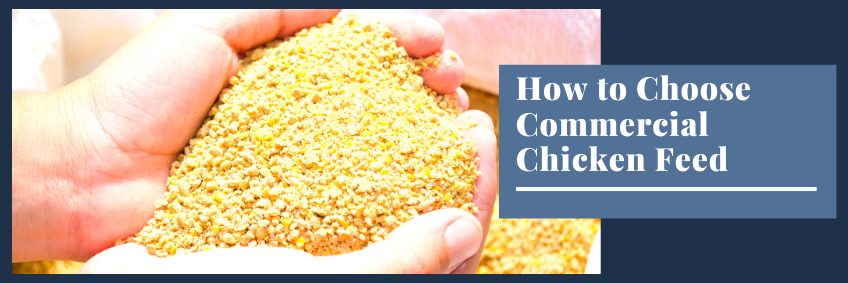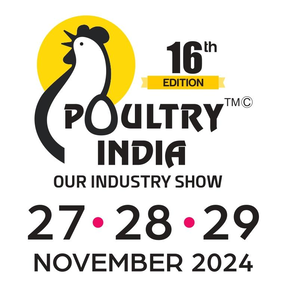How to Choose Commercial Chicken Feed

* Starter rations for chicks. The ration for layer-breed chicks, usually called “starter rations,” should be 20 percent protein. From the time they start eating, meat chicks need a high protein feed of about 22 to 24 percent protein for the first six weeks. It’s called “meat bird starter” or “broiler starter.”
Most people use a medicated feed for the first few weeks of a chicken’s life. You should stop using medicated feeds at 18 weeks for layers and about 2 weeks before you intend to butcher meat birds — even if you haven’t finished the medicated feed.
* Grower pullet rations. If you’re raising young pullets to become layers, you want them to grow slowly enough to develop good strong bones and to reach a normal body weight before they begin producing eggs. High-protein diets tend to hurry the birds into production before their bodies are quite ready. Therefore, the ration for growing pullets, from leaving the brooder at 6 weeks to about 14 weeks, should be about 18 percent protein.
*“Developer or finishing” pullet rations. At 15 weeks, it’s ideal to lower the ration to 16 percent protein. From 15 weeks to 22 weeks old or until they begin laying eggs, whichever is first, protein levels should be about 16 percent. The object is to get them well grown without too much fat.
Your feed should have normal levels of calcium and other vitamins until the birds start laying. If you feed a diet high in calcium and phosphorus to very young birds, it can damage their kidneys, so don’t begin feeding layer feed until pullets are at least 18 weeks old.
*Adult layer rations. After the hens reach the age of 22 weeks or begin laying, and throughout their laying careers, they need a protein level of 16 to 18 percent. The calcium and minerals should be formulated for laying hens.
Also, don’t force extra calcium and minerals on hens by adding things to a properly formulated feed. Too much calcium can cause kidney failure. If you’re getting a lot of thin eggshells or soft-shelled eggs, give your hens some calcium in the form of crushed oyster shells in a feeder where they can choose the amount.
* Broiler rations for Cornish X Rock broiler hybrids. Cornish X Rock crosses grow extremely quickly and require precise diets. After the first six weeks, the protein percentage for these birds can be lowered to 18 to 20 percent until they’re butchered. “Meat bird” or “broiler grower-finisher” is generally a label aimed at meat birds in their last weeks. Grower and finisher rations shouldn’t contain antibiotics because these can be carried into the meat.
* Broiler rations for heritage and free-range meat birds. These types of meat birds grow more slowly and add less muscle meat than the broiler hybrids. They take longer to reach a satisfactory butchering rate. After the first six weeks, you can lower the protein to 18 to 20 percent for the next 6 weeks, and after that, protein content can be 16 percent.
* All stock or sweet feed. In some areas a pellet and whole-grain mix is sold, usually under the name of “all stock” or “sweet feed.” It’s covered with molasses or another sweetener to hold it all together. While these rations sometimes list poultry on them (or more often, include a picture of a chicken), they really aren’t formulated for poultry. You can use these feeds on your other farm animals, and you don’t need to worry if the chickens steal a bite. But definitely don’t use them as your sole chicken feed.
* Forms of feed. Feed comes in three forms: crumbles, pellets, and mash. Research has shown that chickens grow and lay better on crumbles (commonly used for finisher rations and some adult feeds). Pellets (usually used for adult birds) are the second-best, whereas mash is the least-preferred although the most common for starter rations.
* Grit. Grit, a mixture of crushed limestone and granite, helps chickens digest food. In nature chickens pick up small rocks, pieces of bone, and shells. If you’re feeding any kind of homemade diet, whole grains, or have your birds on pasture, you need to supply them with some kind of grit.
If you’re feeding only a commercial mash, crumble, or pellet, your chickens won’t require additional grit. If you have just a few chickens, you can purchase canary or parakeet grit in pet stores. It’s finely ground, but is fine for chicks or, in a pinch, for older birds.









.jpg)



